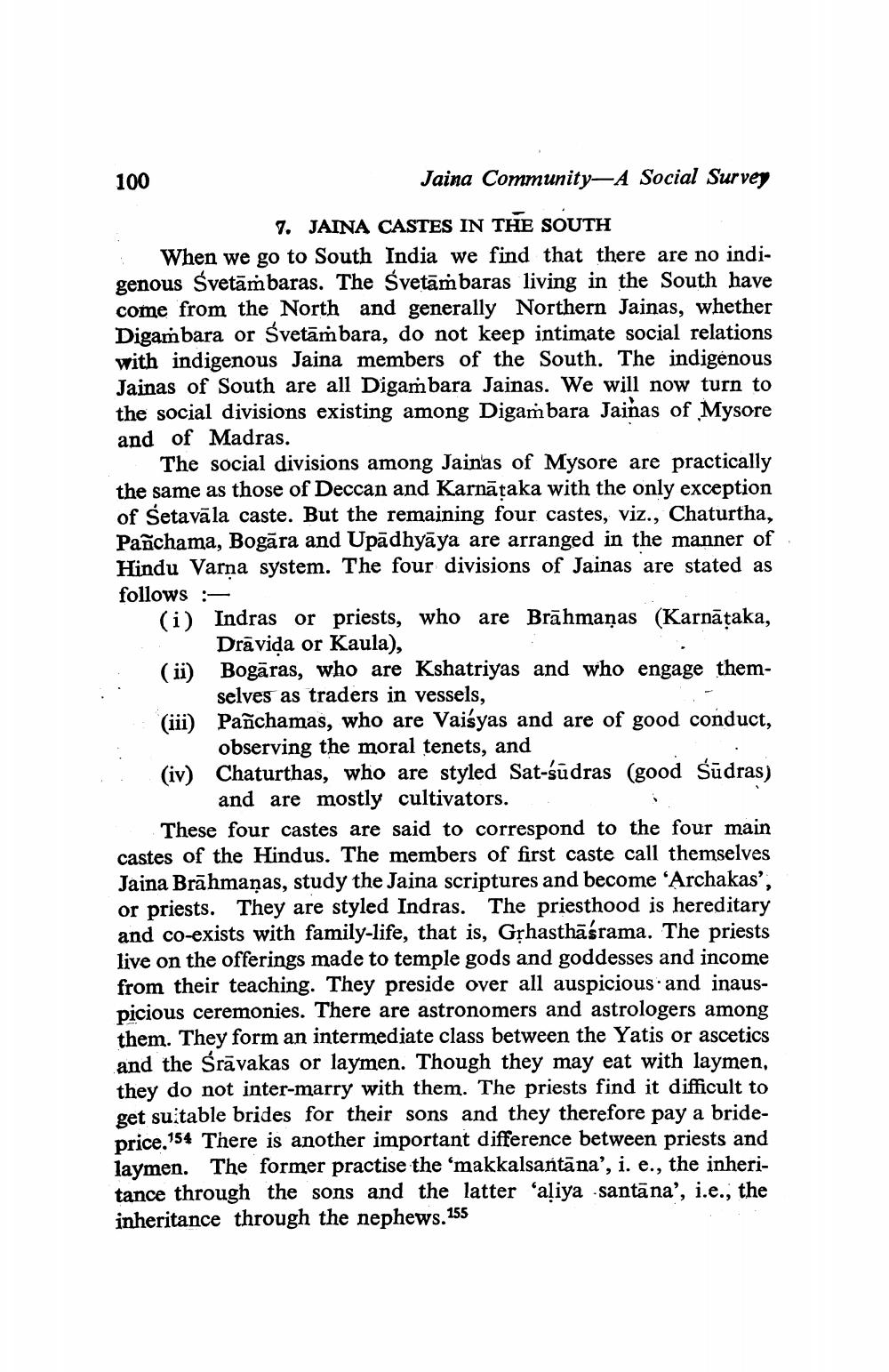________________
100
Jaina Community-A Social Survey 9. JAINA CASTES IN THE SOUTH When we go to South India we find that there are no indigenous Śvetāṁbaras. The Svetāmbaras living in the South have come from the North and generally Northern Jainas, whether Digambara or Śvetambara, do not keep intimate social relations with indigenous Jaina members of the South. The indigenous Jainas of South are all Digambara Jainas. We will now turn to the social divisions existing among Digambara Jainas of Mysore and of Madras.
The social divisions among Jainas of Mysore are practically the same as those of Deccan and Karnātaka with the only exception of Setavāla caste. But the remaining four castes, viz., Chaturtha, Pañchama, Bogāra and Upādhyāya are arranged in the manner of Hindu Varna system. The four divisions of Jainas are stated as follows (i) Indras or priests, who are Brāhmaṇas (Karnātaka,
Drāvida or Kaula), (ii) Bogāras, who are Kshatriyas and who engage them
selves as traders in vessels, Pañchamas, who are Vaisyas and are of good conduct,
observing the moral tenets, and (iv) Chaturthas, who are styled Sat-sūdras (good Sūdras)
and are mostly cultivators. These four castes are said to correspond to the four main castes of the Hindus. The members of first caste call themselves Jaina Brāhmaṇas, study the Jaina scriptures and become 'Archakas', or priests. They are styled Indras. The priesthood is hereditary and co-exists with family-life, that is, Grhasthāśrama. The priests live on the offerings made to temple gods and goddesses and income from their teaching. They preside over all auspicious and inauspicious ceremonies. There are astronomers and astrologers among them. They form an intermediate class between the Yatis or ascetics and the Śrāvakas or laymen. Though they may eat with laymen, they do not inter-marry with them. The priests find it difficult to get suitable brides for their sons and they therefore pay a brideprice.154 There is another important difference between priests and laymen. The former practise the ‘makkalsantāna', i. e., the inheritance through the sons and the latter "aļiya -santāna', i.e., the inheritance through the nephews. 155




